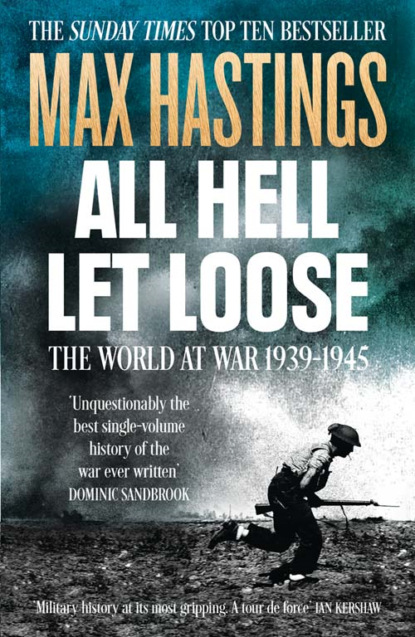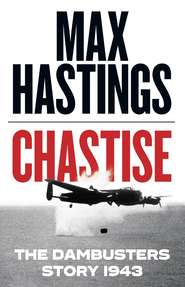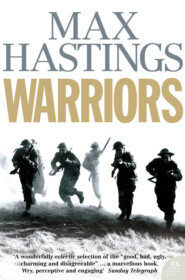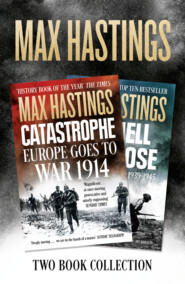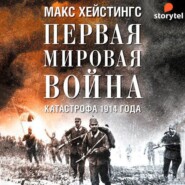По всем вопросам обращайтесь на: info@litportal.ru
(©) 2003-2024.
✖
All Hell Let Loose: The World at War 1939-1945
Настройки чтения
Размер шрифта
Высота строк
Поля
For ten days the Wehrmacht staggered back through a white wilderness landmarked with huddled corpses, the blackened carcasses of abandoned vehicles. Most German commanders favoured a major withdrawal. Hitler, displaying an obstinacy which mirrored that of Stalin, called instead for ‘fanatical resistance’. The ardent Nazi General Walther Model played a hero’s part in stabilising the line. Stalin, against Zhukov’s strong advice, insisted upon extending operations. On 5 January he ordered a counter-offensive the length of the front. Once more following Hitler’s example, by spurning an opportunity to concentrate forces against the weak point in the German line Stalin threw away the possibility of a great victory; Rokossovsky later offered a scornful catalogue of the blunders made, chances missed. The Germans still resisted fiercely, mowing down attackers in tens of thousands. Soviet reserves were soon exhausted, and their advance ran out of steam. Model recovered some lost ground, and Zhukov’s hopes of encircling Army Group Centre were frustrated. But a decisive reality persisted: the invaders had been pushed back between sixty and 150 miles. The Russians held Moscow.
Even as the fate of Russia’s capital was decided, further west a parallel drama unfolded, of almost equal magnitude and embracing even greater human suffering. From north-west and south, in the autumn of 1941 Axis forces closed upon Russia’s old capital Leningrad. Barbarossa persuaded the Finns to avenge their 1940 defeat: in June 1941 Finland’s army, re-equipped by Hitler, joined the assault on the Soviet Union. German troops thrust from north Norway to reach positions within thirty miles of Murmansk. The Finns showed no enthusiasm for advancing much beyond their 1939 frontier, but on 15 September, with their aid the Germans completed the encirclement of Leningrad. The ensuing siege of the city – the tsars’ St Petersburg, with its elegant avenues, baroque palaces and seaside quays – became an epic that continued for more than two years. It assumed a character unique in its horror, and cost its defenders and citizens more lives than Britain and America together lost in the entire war.
Before the battle began, Soviet commanders had anticipated a direct assault. Tens of thousands of civilians dug defensive works under incoming artillery fire; shells fell on them ‘methodically, precisely’, in the words of a veteran. ‘Our soldiers dashed from their dugouts, grabbing youngsters and women, pulling them off the road and out of the line of fire…An incendiary shell landed. A herd of cattle, frightened by the flaming asphalt, began a stampede, kicking up a huge cloud of dust. Then the terrified animals charged straight into a minefield.’ Some children were belatedly evacuated from the city – into the path of the advancing Germans: more than 2,000 perished in a Luftwaffe attack on a trainload of fugitives at Lychkovo.
The credentials of the hoary old Bolshevik general Kliment Voroshilov, charged with the defence of Leningrad, rested solely upon his loyalty to Stalin; he despised professional soldiers and understood nothing of military science. Moscow dispatched a large food convoy to the city, but Voroshilov decided that to acknowledge a need for it would represent defeatism. He diverted the supplies elsewhere, and launched impromptu assaults on the Germans which yielded only slaughter. A despairing Lieutenant Yushkevich wrote in his last diary entry before being killed: ‘Our soldiers are only issued with old rifles and we have pathetically few machine-guns. We haven’t any grenades either. There are no medics! This is not a military unit – we are simply cannon fodder.’ He described his men ‘being hunted through the woods like animals…Constant shooting – panzers everywhere.’
On 8 September the encirclement of Leningrad became complete, its siege formally commenced. Next day, Stalin dispatched Zhukov to relieve Voroshilov. His unexpected arrival by light aircraft prompted a petty farce: for fifteen minutes guards at the city’s front
headquarters beside the Smolny Institute declined to admit him, for lack of a pass. ‘Well, that’s the army for you,’ shrugged Zhukov later, but at the time he was probably less philosophical. Voroshilov, flown back to Moscow, dared to denounce Stalin to his face, shouting: ‘You have yourself to blame for all this! You’re the one who annihilated the Old Guard of the army; you had our best generals killed!’ When Stalin demurred, the old revolutionary seized a salver bearing a roast suckling pig and smashed it down on the table. Voroshilov was fortunate to escape a firing squad.
Zhukov reorganised Leningrad’s defence, countermanding Voroshilov’s order to scuttle what was left of the Baltic Fleet in the harbour; through the years ahead, the warships’ guns provided critical support for the land forces. The general launched a series of thrusts against the Germans which climaxed on 17 September, cost thousands of lives, and foundered amid devastating artillery fire. A marine officer, Nikolai Vavin, described an attempt to reinforce the island fortress of Oreshek on Lake Ladoga: ‘Our guys just didn’t have a chance. The Germans quickly spotted us from the air – and it became a mass execution. The enemy’s planes first bombed and then machine-gunned us. Out of my own landing group of two hundred men, only fourteen reached the shoreline.’ Faced with protests from his officers about the futility of such attempts, especially from the Nevsky bridgehead on the east bank of the Neva, Zhukov remained implacable: ‘I said attack!’ Casualties soared, while medical facilities for the wounded were almost non-existent. Zhukov placed blocking units – zagradotryady – behind the front, to shoot down his own men who attempted to flee, a practice that became institutionalised in the Red Army. German propaganda loudspeakers taunted the doomed assailants on the battlefield: ‘It’s time to assemble at your extermination points again – we shall bury you on the banks of the Neva.’ Then the next barrage fell upon Soviet troops milling helplessly in their positions.
For weeks, the Russians remained oblivious of the fact that the Germans had no intention of launching a ground attack on Leningrad, nor even of accepting its surrender. Zhukov acquired a prestige in Stalin’s eyes as saviour of the city, rooted in failure to understand that it had not been seriously assaulted. In a moment of fantasy, German staff officers in Berlin discussed the possibility of making a propaganda gesture by inviting the United States to accept the 2.5 million inhabitants of Peter the Great’s capital as refugees. Hitler, instead, set out to starve them to death. Professor Ernst Ziegelemeyer of Munich’s Institute of Nutrition – one of many scientists who provided satanic counsel to the Nazis – was consulted about practicalities. He agreed that no battle was necessary; it would be impossible for the Russians to provide their beleaguered citizens with more than 250 grams of bread a day, which could not sustain human life on a protracted basis: ‘It is not worth risking the lives of our troops. The Leningraders will die anyway. It is essential not to let a single person through our front line. The more of them that stay there, the sooner they will die, and then we will enter the city without trouble, without losing a single German soldier.’
Hitler declared: ‘Petersburg – the poisonous nest from which, for so long, Asiatic venom has spewed forth into the Baltic – must vanish from the earth’s surface. The city is already cut off. It only remains for us to bomb and bombard it, destroy its sources of water and power and then deny the population everything it needs to survive.’ The first major Luftwaffe attack on Leningrad destroyed the waterside Badaev warehouses, holding most of the city’s food stocks; melted sugar ran along a neighbouring road, and fires burned for days. The citizens quickly understood their plight. A woman named Elena Skryabina wrote in her diary: ‘We are approaching the greatest horror…Everyone is preoccupied with only one thought: where to get something edible so as not to starve to death. We have returned to prehistoric times. Life has been reduced to one thing – the hunt for food.’
Pravda correspondent Lazar Brontman described in his diary how citizens made soup and bread with grass. Once such fare was accepted as a norm, he said, ‘grass cakes found their own price in the market’. A single match cost a rouble, which caused many people to ignite their kindling with magnifying glasses under the sun. One of Brontman’s writer friends was eccentric enough to cling to his household pet, ‘probably the only surviving dog in Leningrad’. Bicycles provided the sole means of civilian transport. Since water supplies now depended on hydrants, women washed clothes in the street while passing military vehicles weaved between them. Every vestige of vacant soil was tilled for vegetables, each plot marked with its owner’s name. Fuel was desperately short, because the city was invested before the inhabitants could make their annual pilgrimages to collect firewood from outlying forests.
The Germans removed their tanks to reinforce operations further south. The besiegers, less numerous than the defending Russian troops, dug themselves into bunkers and gun emplacements for the winter. Every movement towards their lines by either attacking soldiers or fleeing civilians was met with annihilating artillery, mortar and machine-gun fire. Captain Vasily Khoroshavin, a thirty-six-year-old Soviet battery commander, wrote to his wife on 25 October: ‘I have received a letter from you and I cannot describe the pleasure it gave. Today is the sixth that I am spending in the cellar of a mason’s shop only accessible by crawling. I sit here directing fire while mines and shells explode around me, shaking the earth. It is impossible to get out for water. Hot tea is our greatest luxury, and rations are brought to us by night. Yesterday a shell exploded between me and a reconnaissance man, shredding the tails of my greatcoat. I was unhurt, except that my gas mask case hit me on the head.’ Khoroshavin was less fortunate three months later, when another German salvo killed him.
‘All our soldiers on the front look like ghouls – emaciated by hunger and cold,’ wrote one of them, Stepan Kuznetsov. ‘They are in rags, filthy, and very, very hungry.’ Thereafter, the saga of Leningrad focused not on the battlefield, but on the struggle for survival among its inhabitants, which many lost. German artillery shelled the city daily, at hours most likely to catch victims in the open: 0800–0900, 1100–1200, 1700–1800, 2000–2100. The bread ration for civilians fell below the level the murderous Professor Zigelemeyer deemed necessary for existence: a daily minimum of a hundred tons of supplies a day had to reach the city across Lake Ladoga, and there was often a shortfall: on 30 November, for instance, only sixty-one tons got through. Loaves were baked with mouldy grain salvaged from a ship sunk in the harbour, from cottonseed oilcake, ‘edible’ cellulose, flour-sack and floor sweepings, horse oats.
Through October and November, conditions worsened steadily: German guns and bombers pounded streets, schools, civic buildings, hospitals. For countless citizens, starvation beckoned: they began to boil wallpaper to extract its paste, to cook and chew leather. As scurvy became endemic, an extract was produced from pine needles to provide vitamin C. There was a plague of thefts of ration cards – mere money had become redundant. Pigeons vanished from the city squares as they were caught and eaten, as too were crows, gulls, then rats and household pets. At an art academy, old Professor Yan Shabolsky sent for his star pupil, eighteen-year-old Elena Martilla. ‘Lena,’ he said, ‘things are getting very bad here. I don’t expect to survive this. But someone must make a record of what is happening. You are a portrait artist – so draw pictures of Leningrad’s people under siege – honest pictures, showing how they are suffering in these diabolical circumstances. We must preserve this for humanity. Future generations must be warned of the absolute horror of war.’
Thereafter Elena Martilla roamed the streets, making such quick sketches as cold and weakness allowed of faces stretched, drawn, sunken, hollowed by deprivation no other modern European civilisation had experienced on such a scale. She noticed that many adults responded by closing down emotionally, becoming passive and withdrawn, apparently sleepwalking. Children, however, became unnaturally alert: a small boy delivered a vivid, witty running commentary on a Luftwaffe attack to his terrified adult companions in a shelter. She wrote: ‘It was as if that boy had aged fifty years in as many days – his face looked so old, and through this unnatural ageing I felt that he had been robbed of the innocence of childhood. It was horrifying to hear his natural curiosity welded to the ghastly machinery of war…I looked more closely into his face – and saw an uncanny wisdom in it. What I glimpsed in that moment shook me: I realised that a little child could look like a sage old man. Amid the agony we were suffering, something extraordinary had briefly come to life.’
Most Leningraders, deprived of power, heat, light and employment, eked out a hibernatory existence amid mounting snow and rubble; their lives and metabolic processes slowed like the fading of an old clockwork gramophone. In Svetlana Magaeva’s apartment building, an old woman named Kamilla grew steadily more enfeebled, though neighbours burned furniture in her stove to preserve a flicker of life. One morning, she suddenly rose from her bed and embarked upon a frenzied search of every cupboard and crevice for food. Frustrated, she took plates and dishes from her cabinet and dropped them one by one on the floor. Then she fell on her hands and knees, and searched the fragments for breadcrumbs. Soon afterwards, Kamilla died.
By December, the outside temperature had dropped to –30 degrees Celsius, and starvation was killing tens of thousands. The bread ration shrank to 125 grams. Some people mechanically continued their work: at the city’s Zoological Institute, fifty-year-old beetle expert Axel Reichardt worked on his magnum opus The Fauna of the Soviet Union, until one day he was found lying dead on a mattress in his office. Sasha Abramov, an actor at the Musical Comedy Theatre, where the cast were almost too weak to walk to performances, expired during an interval, wearing his costume as one of Dumas’s three musketeers. Elena Skryabina wrote: ‘People are so weak with hunger that they are completely indifferent to death; they perish as if they are falling asleep. Those half-dead people who are still around do not even pay any attention to them.’ Stiffened corpses lay in the streets until they were piled onto sledges for disposal in shell craters. German intelligence, monitoring the city’s agony with clinical fascination, calculated that 200,000 people had died in three months.
Yet the privileged escaped most of the suffering. Zhukov was recalled to Moscow when it became plain that there would be no battle, leaving Leningrad in the hands of party officials who ate prodigiously throughout the siege. It became a characteristic of Russia’s war that corruption and privilege persisted, even as tens of millions starved and died. Some functionaries were evacuated by air, as was the city’s most famous resident, the composer Dmitry Shostakovich, who completed elsewhere his Seventh ‘Leningrad’ Symphony, which became a symbol of the experience. For the dignitaries who stayed, bread, sugar, meatballs and other cooked food remained readily available at a canteen in the Smolny Institute, with access to a private heated cinema. Rumours circulated about the Party’s shameless cynicism and privileges: an anonymous pamphleteer signing himself ‘The Rebel’ printed a leaflet that was found in the streets: ‘Citizens, down with the regime that lets us die of starvation! We are being robbed by scoundrels who deceive us, who stockpile food and leave us to go hungry. Let us go to the district authorities and demand more bread. Down with our leaders!’ The NKVD devoted immense effort to identifying ‘The Rebel’, and in December 1942 extracted a confession from a fifty-year-old factory worker named Sergei Luzhkov, who was dispatched to his inevitable fate before a firing squad.
At the end of 1941, the freezing of Lake Ladoga opened a more resilient link to the outside world: the legendary six-lane ice highway created by 30,000 civilian workers. Four thousand lorries were soon shuttling along this ‘Road of Life’, but few of the incoming supplies – initially seven hundred tons a day – reached ordinary citizens. On Stalin’s orders, a renewed attack was launched to break the German encirclement, which failed with the usual heavy losses. A radio operator on the Volkhov front east of the city, Nikolai Nikulin, wrote: ‘I learned what war was really like. One quiet night I was sitting in my icy hole, unable to sleep because of the cold, scratching my lice-infested body, crying from weakness and misery…In an empty German dugout I found some potatoes, frozen hard as stones, made a fire and boiled them in my helmet. With food in my stomach, I gained spirit. I started to change after that night, developing defence mechanisms, an instinct for self-preservation, staying power. I learned how to find grub…Once a horse that was pulling a sledge near us was killed by a shell. Twenty minutes later, little was left of it save the mane and guts, because smart guys like me dismembered it. The driver hadn’t even recovered from the shock – he just sat on his sledge clutching the reins.’ Twenty Soviet divisions were destroyed in attempts to relieve Leningrad; their only significant success was recapture of the north-eastern junction at Tikhvin on 9 December, which made it possible to move supplies to a railhead within distant reach of the city.
Extreme hunger persisted: on 13 January, after hours of queuing in the snow Elena Kochina had just collected her pitiful ration when a man behind her seized the bread, thrust it into his mouth and sought to gobble it down. In blind fury, the desperate mother turned and threw herself upon him: ‘He fell to the ground – I fell with him. Lying on his back, he tried to cram the whole piece of bread into his mouth at once. With one hand I grabbed him by the nose, turning it aside. With the other I tried to tear the roll out of his mouth. The man resisted, but more and more weakly. Finally, I succeeded in retrieving everything he hadn’t managed to swallow. People watched our struggle in silence.’
Lidiya Okhapkina had her ration cards stolen, a misfortune that threatened her little family with imminent death, so narrow was the margin of survival. That night, for the first time in her life the despairing woman fell on her knees and prayed to the deity whose existence Stalin’s regime denied: ‘Have mercy O God on my innocent children.’ Next morning came a knock on her door. She opened it to find a Red Army soldier she had never seen, bearing a parcel from her husband, fighting hundreds of miles away, containing a kilo of semolina, a kilo of rice and two packets of biscuits. These proved to represent the difference between life and death for her family. Others were less fortunate. In the first ten days of January, the NKVD reported forty-two cases of cannibalism: corpses were found with thighs and breasts hacked off. Worse, the weak became vulnerable to murder not for their meaningless property, but for their flesh. On 4 February a man visiting a militia office reported seeing twelve women arrested for cannibalism, which they did not deny. ‘One woman, utterly worn out and desperate, said that when her husband fainted through exhaustion and lack of food, she hacked off part of his leg to feed herself and her children.’ The prisoners sobbed, knowing that they faced execution.
In February, by far the worst month of the siege, 20,000 people a day were reported to be dying; amid the weakened population, dysentery became a killer. There were queues at street taps for water, and fires burned unchecked for lack of means to put them out. The Musical Comedy Theatre closed, and supplies of coffins ran out. Many of those with energy to read turned to War and Peace, the only book that seemed capable of explaining their agony. Those who survived had not merely exceptional will, but also commitment to a routine: washing themselves, eating off plates, even continuing academic studies. The authorities considered transporting civilians to safety on trucks returning empty across Lake Ladoga. Some mothers and babies indeed travelled, and often died en route; but Stalin rejected a wholesale evacuation, for prestige reasons. Leningrad’s ordeal became a display of fortitude such as only a tyranny could have enforced, and probably only Russians could have endured.
The British and Americans continued to fear Soviet defeat until the end of 1942: they were slow to comprehend the losses and miseries of the invaders. As 1941 drew to a close, two million German soldiers, their tunics lined with newspaper and straw to compensate for the clothing they lacked, were in straits almost as dire as those of Russia’s people. Hans-Jürgen Hartmann wrote from Kharkov: ‘I have often wondered what this Christmas might be like. I always cast out the war from my imaginary picture, or at least push it to the very edges. I conjured up special words for the occasion. Christmas, homeland, longing, joy and hope. Yet these words, always sincere and heartfelt, became increasingly strange and precious to me. They evoked something timeless, precious – and yet, in the conditions of the Eastern Front, seemed scarcely believable any more…How brutal this war is becoming. It is now a total war, a war against women, children and old people – and that is the greatest horror.’
Вы ознакомились с фрагментом книги.
Приобретайте полный текст книги у нашего партнера:
Приобретайте полный текст книги у нашего партнера:





